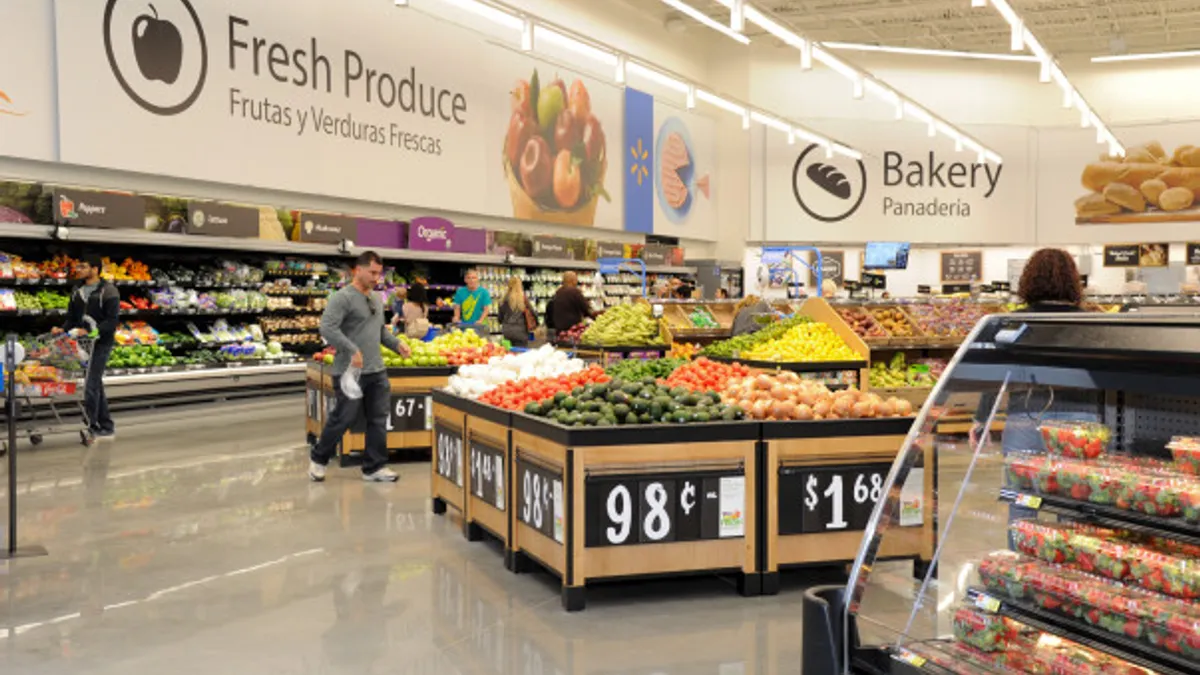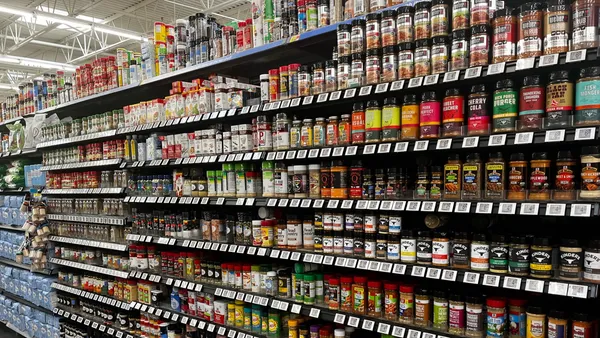Dive Brief:
- Amazon’s entry into the grocery space has caused others in the category to move at a “tremendously rapid pace” to be greener and achieve cost reductions, Jerri Traflet, senior marketing executive for retail for General Electric (GE), told Winsight Grocery Business. Grocers are not only looking to trim costs but improve the customer experience as well, she said.
- Many of these retailers are turning to new technology to help them reduce their carbon footprint. For example, refrigeration represents about 60% of energy costs for grocers, but new equipment can reduce energy by 30% to 50%. Thermal energy storage is one of the newest “green” energy solutions for grocers.
- Walmart has been a leader in LED lighting, having installed more than 1.5 million such fixtures in 6,000 locations throughout the past decade. These efforts, the company says, has reduced the cost of this operating expense by more than $100 million.
Dive Insight:
Reducing carbon footprints is not only a financially savvy move – as it eventually allows retailers to save on operational costs – it’s also very much in line with what coveted young consumers want. Millennials have noted that sustainability is high on their list of spending priorities, so this focus can yield a quicker return on investment than it has in the past.
The incentive to implement green initiatives is even stronger when considering the success some retailers have had with these efforts. Walmart, for example, claims to have reduced its costs by more than $100 million with the installation of LED fixtures – yielding a 12% reduction in energy use per square foot since 2010. LED’s energy- and money-saving results have also inspired Meijer to transition its interior lighting to LEDs by 2021.
Other grocers are also looking for ways to reduce their carbon footprint. Giant Food Stores and Martin’s Food Markets fueling stations, for example, asked sustainability expert GreenPrint to develop carbon-offset projects for their fuel centers, such as planting trees or creating local greenscapes. A Whole Foods store has installed an Axiom Energy Refrigeration Battery, which cuts the store’s electricity usage by 40%. This is a big deal considering refrigeration makes up about 60% of a grocer’s energy costs.
More recently, Kroger has touted the green benefits of its digital shelf display technology, which requires fewer printed price tags, runs on renewable energy and allows stores to turn down their overhead lights.
All of these approaches are beneficial in a margin-starved business. According to Business Energy Advisor, energy costs alone can account for up to 15% of a grocery store’s operating budget. Since grocers’ profit margins are about 1%, every dollar in energy savings equals about a $59 increase in sales.
Energy bill savings could be significant boon to retailer's bottom lines, giving grocers the opportunity to pour that extra money into store remodels, e-commerce and other technology initiatives that could better position them in an intensely competitive industry.












